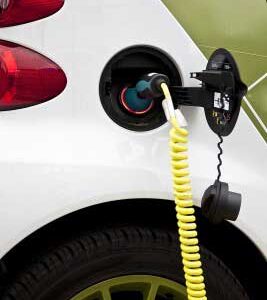Electric Vehicles (EVs) first came into existence in the mid-19th century when electricity was among the preferred methods for motor vehicle propulsion, providing a level of comfort and ease of operation that could not be achieved by the gasoline cars of the time.
The internal combustion engine remains as the dominant propulsion method for motor vehicles, but electric power is certainly commonplace in other vehicle types, such as trains and smaller vehicles of all types.
UK scientists claim that by simplifying the power electronics they have developed a way to help Electric Vehicles travel further on a single battery charge. Lead by the National Physical Laboratory (NPL) researchers have created a new material that they say can act as a more effective capacitor than those currently used in EVs, which require complex cooling systems.
The NPL-led team, who have built a claim that a prototype capacitor built using ceramic material, can function at much higher temperatures than conventional devices made with liquid electrolytes or polymers. It can also hold more energy.
“The operating temperatures of electric vehicles can go up to 140ºC and even higher in some cases,’ NPL’s lead researcher on the project, Tatiana Correia said. ”That is double the temperature conventional capacitors can withstand.
“To compensate for that, the power electronics are covered by a complex cooling system that brings extra weight. That translates to the energy consumption and mileage range of electric vehicles as well.”
The researchers claim the new capacitor can operate at close to normal efficiency at temperatures over 200ºC. They also say it can be made in a conventional multi-layer design from relatively low cost materials using standard fabrication methods.
The capacitor is made from a ceramic paste with a granular structure, comprising a bismuth ferrite (BiFeO3) compound doped with strontium-titanate (SrTiO3).
Correia said only one scientific paper had been published on a version of this material in the 1960s. After trialling a range of other substances, researchers began experimenting with its composition to tailor it for use in capacitors.
“It’s very difficult to increase energy density in these kind of ceramic materials. So we have to tailor the composition, we need to change the structure, the lattice and the doping.
“The main difficulty of these materials is that they can store quite a lot of energy but they can’t release it. So we introduced some strontium-titanate and other dopants to reduce the remnant energy.”
The NPL-group is now looking to integrate the capacitor technology into an EV power electronics system for further testing.
They believe the new capacitor could be used for systems that involve power conversion under extreme conditions, for example in photovoltaic solar, space or oil and gas technology.


Recent Comments